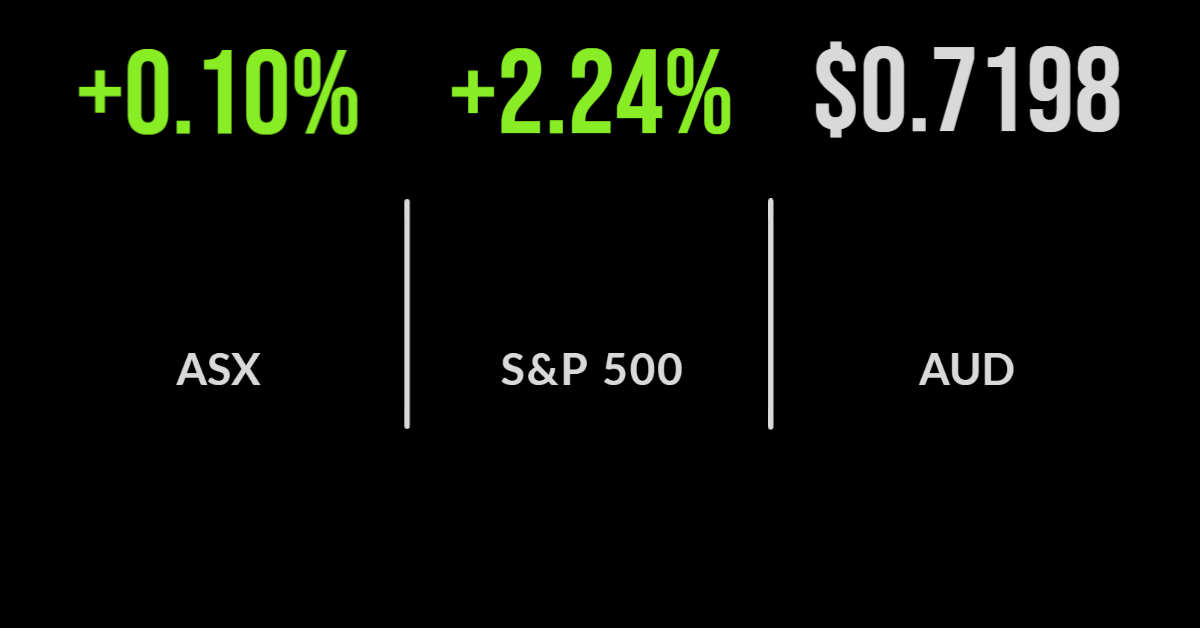Market steadies as tech surges, Harvey Norman, Kogan report
The Australian sharemarket followed a strong global lead, finishing 0.1 per cent higher taking the weekly loss to just 4.3 per cent despite the war in Ukraine.
On Friday, it was the technology sector that outperformed, gaining over 8 per cent, almost entirely due to a 32 per cent surge in Afterpay’s new owner Block (ASX: SQ2) which was a 29 per cent jump in revenue.
Financials continued to underperform with Magellan (ASX: MFG) reversing recent gains to fall 10 per cent after another increase in outflows from their core global funds.
Charter Hall (ASX: CHC) gained 3.7 per cent after the property manager nearly doubled revenue after assets under management grew by 50 per cent during the year.
Shares in AdBri (ASX: ABC) gained more than 7 per cent after management flagged price increases for concrete and delivered a 25 per cent jump in profit despite difficult conditions.
E-commerce retailer Kogan was smashed once again, falling 6 per cent, after reporting a massive reversal in profit, to a loss of $11 million as the issue of shares in the form of remuneration hit the bottom line.
Over the week, the popular trade in commodities underperformed, materials falling 4.6 per cent, with defensive consumer staples buoyed by Woolies and Coles gaining 3.4 per cent.
Cimic (ASX: CIM) was the standout, gaining 35 per cent on a takeover bid, whilst Tyro Payments (ASX: TYR) dropped by a quarter after flagging a slowdown in growth.
US market rallies on Russia talks, big tech, gold gains
The Nasdaq has recovered more than 8 of the 21 per cent it has fallen from its November high in the last few days, a dip buyers re-enter the market despite the Ukraine-Russia conflict.
Friday’s trade saw a massive turnaround in sentiment, with the Nasdaq gaining 1.6 per cent, the Dow Jones 2.5 and the S&P500 2.2 per cent, with eight of the markets 11 sectors gaining more than 2 per cent on the day.
The driver seems to be twofold, one being a return to risk on mode by investors who had sent the market lower in 2022 and hopes that the conflict may push back the Federal Reserve’s rate hike timetable.
Lesser-known names like Mercado Libre (NASDA: MELI) up 7 per cent, rallied alongside the giants, with Microsoft, Apple and Amazon all gaining more than 1 per cent as investors flocked back to their ‘quality’ in a time of stress.
The price of gold is nearing US$2,000 per ounce for the first time in a decade, whilst oil has settled somewhat as the results of the invasion shakeout into the markets.
Economic data showed a strong consumer market, with spending up 2.1 per cent in January, but a weaker housing market with price inflation likely a factor in the 5.7 per cent fall in pending home sales.
The US market continues to outperform Australia, with many viewing it akin to an emerging market, the Dow Jones finishing flat for the week, the S&P500 up 0.8 and the Nasdaq 1.1 per cent.
Seeing the forest for the trees, even the beaten down can keep falling, management teams under pressure
Whilst the human cost will be significant, in terms of asset markets and performance, the events in Ukraine are simple another bump in the road for markets.
For several years, if not decades, now markets have been all but immune from geopolitical events and risk, due to the understanding that they are generally localised, and few countries have the wherewithal to join any armed conflict.
More importantly, they know that central banks and governments are attuned to these risks and expect them to respond accordingly.
If nothing more, these events remind us that many companies are simply unimpacted by these events, with the likes of Google gaining on the news.
The week offered another insight into the importance of companies to keep expectations in check and that any level of underperformance will be punished in reporting season, even if said company has already fallen 70 per cent in value.
A 20 per cent fall on a company down 70 per cent, is still a significant fall.
Finally, pressure has once again returned to management teams around the world to deliver on their pay packets and create value for shareholders.
They must negotiate higher input costs, difficult staffing situations and make major decisions around the level of margin compression they are willing to wear.








